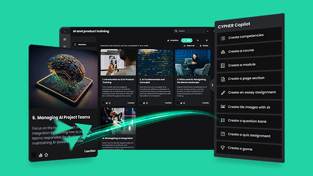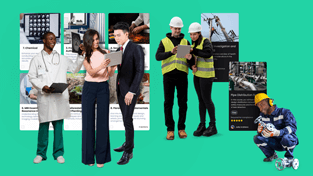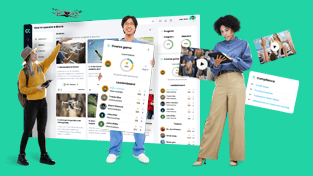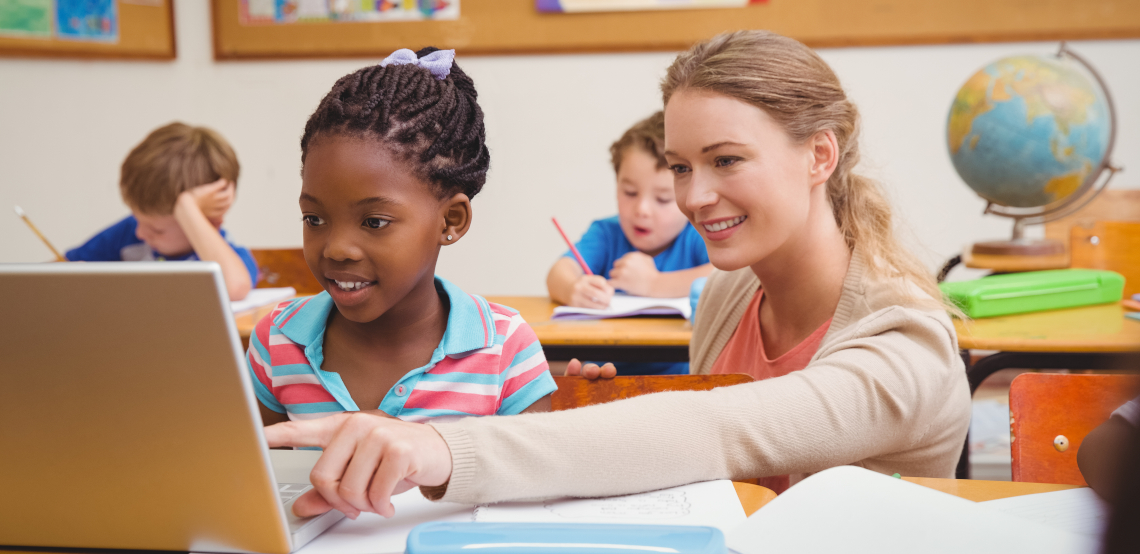Along with concepts like blended learning, adaptive learning and virtual learning, the need to focus on the main character in the learning process came about. This is how personalized learning became the key to every new approach to learning and teaching.
Personalized learning is created for all students regardless of their academic level or age, helping them reach their potential, awakening their inner motivation and personal drive, developing all the necessary skills they need to master problem solving and to take learning into their own hands.
Personalized learning gives students responsibility for their learning process, urging them to take ownership of and control over their education, offering flexibility and self-paced acquisition of academic content in the process. Check out the key elements of personalized learning:
5 Key elements of personalized learning
A survey by the Alliance for Excellent Education concluded that 79% of parents and 73% of teachers don't agree with the one-size-fits-all approach to education schools still have nowadays. Due to clear evidence of math and reading test scores improvement in schools that have shifted their approach to personalized learning, 71% of parents and 77% of teachers would be comfortable with the change.
There are some examples of schools following the personalized approach in the US, but they had to tailor it to fit their circumstances. Here are some approaches:
- Competency-based approach in which students progress at their own pace mastering key concepts as opposed to strictly learning in class.
- Interdisciplinary student-directed approach through projects with the purpose of developing critical thinking and collaboration.
- A mix of the two approaches mentioned above based on rigorous academic content and work-based learning.
- A student-centered approach using personalized data to identify gaps in knowledge for a more autonomous learning.
The common ground for all approaches to personalized learning is the teacher-student relationship based on trust which helps students progress at their own pace by reflecting on their strengths and weaknesses and the flexibility and real life applicability of the learning process.
There are 5 key elements of personalized learning, each of great importance individually, but greater yet as part of the whole approach.
-
Student agency
Ownership, agency or control are the words used to refer to students taking responsibility over their own learning. In doing so, students become aware of their strengths and weaknesses and are able to advance grade levels on mastered skills, but also reinforce the skills they lack.
Student agency means they are in control of and active participants in their own learning process, which is why knowledge is acquired better — according to theorists such as Piaget and Dewey. Teachers only facilitate the content acquisition while students internalize it and own it too.
Providing spaces for students to express themselves, like blogging, safe LMS online communities or using technology tools they are so familiar with to create their own content, photo and video journals and give and receive feedback to and from peers leads to greater achievement levels, greater class participation, better preparation, self-awareness and decreases in behavioral problems.
-
Flexible learning environments
Unfortunately, instruction is still delivered in traditional learning environments, with rows of desks and students typically faced forward, which is known to hinder the learning process.
In flexible learning environments though, students have more control over how they learn due to non-conventional flexible seating that speak to students needs, while having the teacher more as a facilitator than an instructor. Classic desks and chairs are replaced with different pieces of furniture that can be purchased from established vendors or bought from flea markets or received as donations.
Designing such a space with places for solitary work, collaborative work and for debates and mini lessons gives students confidence and it leads to improved academic results, better peer interaction and less bored students.
-
Individual mastery
At the center of personalized learning is the learner and his or her needs. In a time when students need to be able to juggle family and work life with their education, schools and platforms focused on individual mastery rather than teaching for test scores are needed more and more.
With independent modules designed as part of a larger learning goal, students can focus on mastering skills, regardless of the time, place or pace of learning being allowed to tap into their potential. For this, teachers have to offer individualized support and guidance and students need self-motivation, grit, perseverance and agency.
The concept of individual mastery helps construct a strong foundation for education elevating its levels naturally and in which the only variable is how much time students need to master a skill.
-
Personal learning paths
Personalized learning involves adjusting instruction to students' learning pace with the goal of tracking long-term learning. Doing so is no longer an issue thanks to learning management systems which help educators create classes, assess students and add individualized learning paths.
An LMS provides the necessary tools for teachers to meet students needs by personalizing goals within paths and creating a flexible virtual learning environment. LMSs also give students agency over their learning and allows them to become proactive by having access to self-assessment tools, such as quizzes and surveys with instant feedback, but also a space to express themselves and keep track of their progress.
Personalized paths adapt to multiple learning styles and focus on how students experience learning offering customizable modules to respond to individual learning needs.
Read more: The role of the LMS in designing personalized learning paths for students
-
Learner profiles
Getting to know all your students and being able to adjust instruction to students' needs have become easier thanks to LMS learning profiles which provide data on learning evolution. Having individual learner profiles give powerful insights on progress, to teachers and students alike. By analyzing students' progress teachers can create personalized content, assign individual goals and give customizable feedback while students are able to build on their strengths, overcome their weaknesses and follow their own goals and interests.
LMSs also allows students to join same interest groups and enhance their knowledge. They even allow teachers to give team assignments based on students' common interests or can assign tasks to which they can ask for peer reviews. This gives learners a clearer picture over their progress and encourages ownership.
Conclusion
Personalized learning allows for a teacher-student partnership in which students have a role in decision making. Teachers and students co-design the curriculum and assessment. Teachers provide a menu of options while students identify ways of learning suitable for their needs. Teachers help design learning strategies to meet students’ needs and students choose topics according to their interests and ways of showing their knowledge.
Personalized learning revolves around the students, allowing them to organize their learning following their own time, place and pace. Students build a growth mindset taking agency over their education with perseverance and grit. By offering equal opportunities for learner development, this type of approach leads to a society in continuous progress that values equity which should be the definition of success.







